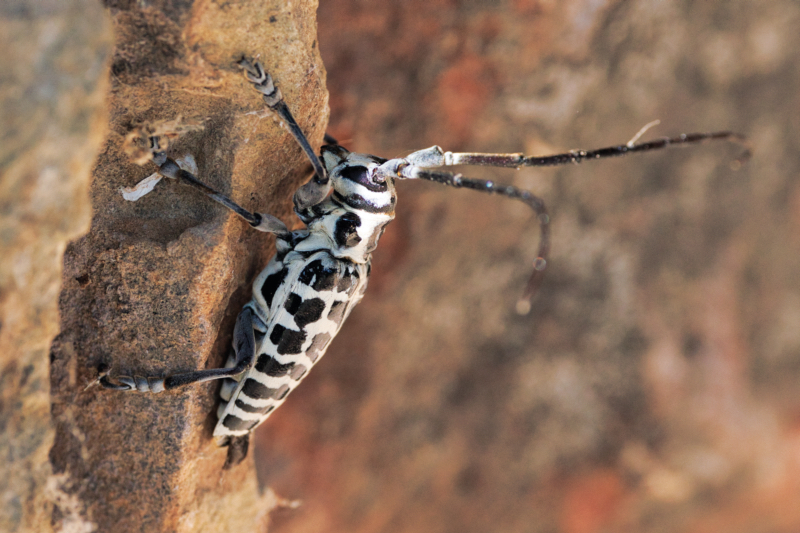I was leaving the Sequoyah National Wildlife Refuge in Oklahoma after a great morning of photographing wildlife. As I drove near the entrance, I noticed my friend and fellow photographer Charles Vann parked along the side of the road. I pulled over to say hello and see what he was up to.
Charles told me he had just spotted a very large beetle. Being the bug lover that I am, I was keen to get a look at it. Charles led me over to the beetle and I instantly went into photographer mode.
This beetle was a real beauty! It had a black body about 1.5 inches long with numerous cross stripes of white formed by dense growths of white hairs. It also had long black antennae. Its legs were black and very prominent. I captured a few photos, including a side view highlighting its stripes and coloring. I also took a top-down shot looking directly on the beetle’s back.


After talking with Charles and doing some research, I determined this was a Cottonwood Borer beetle. These large beetles are native to this region and get their name from the cottonwood trees they rely on. The larvae bore into dead cottonwood trees and feed on the wood. As adults, they mate and lay eggs for the next generation.
I feel very fortunate to have encountered this impressive beetle. As a wildlife photographer, moments like these remind me to always be observant. You never know when you’ll have the chance to photograph an interesting insect or animal. I’m grateful to Charles for spotting it and allowing me the opportunity to photograph the Cottonwood Borer. Discoveries like this one are what make time in nature so rewarding.
